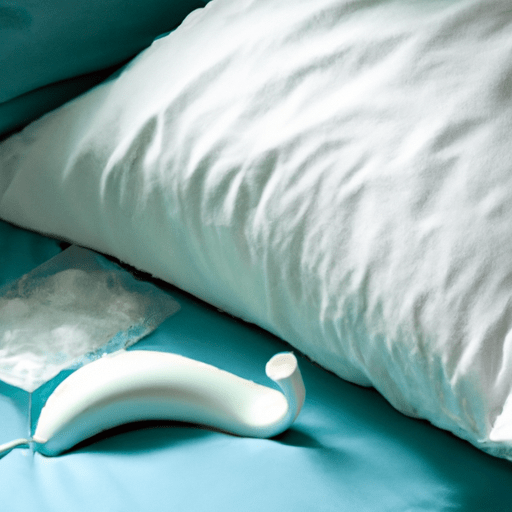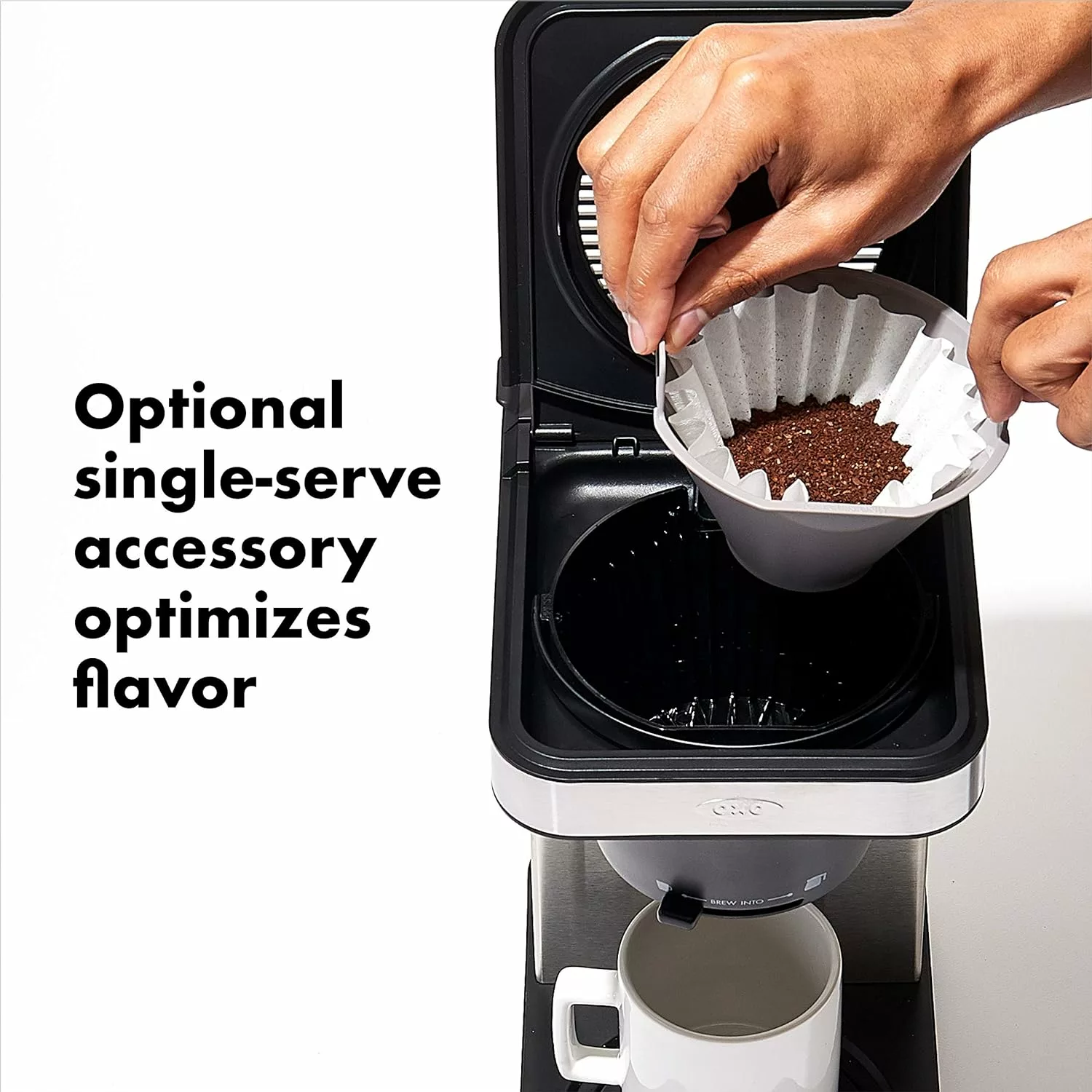Have you ever found yourself craving a creamy cup of milk but realized you didn’t have any on hand? Well, fret no more! In this article, you will discover an ingenious and simple solution to satisfy your milk craving using none other than coffee creamer. Whether you’re out of milk or simply looking for a unique twist on your morning beverage, we’ve got you covered. Say goodbye to those frustrating moments of discovering an empty milk carton and hello to a delicious cup of milk made with coffee creamer.

This image is property of images.pexels.com.
Understanding the Basics
What is a Coffee Creamer
A coffee creamer is a dairy or non-dairy product that is used to modify the taste and texture of coffee. It is typically added to coffee to provide a creamy and rich flavor, similar to the effects of adding milk or cream. Coffee creamers come in various forms, including powdered, liquid, flavored, and unflavored options. They are designed to enhance the overall coffee-drinking experience by adding a touch of sweetness and creaminess.
Difference Between Milk and Coffee Creamer
While both milk and coffee creamer are used to enhance the taste and consistency of coffee, there are some key differences between the two. Milk is a natural product derived from cows, goats, or other mammals, while coffee creamer is a processed product that often contains additives and flavorings. Milk is typically used in its liquid form, whereas coffee creamer can come in various forms, such as liquid or powdered.
One significant difference between milk and coffee creamer is the fat content. Milk naturally contains varying levels of fat, depending on the type of milk (whole, low-fat, or skim) you choose. Coffee creamers, on the other hand, often have a higher fat content or use non-dairy fats to mimic the creaminess of milk. Another difference is the level of sweetness – coffee creamer is usually sweeter than milk, as it is often made with added sugars or sweeteners.
Types of Coffee Creamers
Coffee creamers come in a variety of options, each offering a unique taste and texture. Here are some common types of coffee creamers you can find:
-
Liquid Coffee Creamers: These creamers are typically found in the refrigerated section of the grocery store. They are poured directly into your coffee and usually come in flavors like French vanilla, hazelnut, or caramel.
-
Powdered Coffee Creamers: Powdered creamers are a convenient and long-lasting option. They can be stored at room temperature and mixed with water or milk to create a creamy consistency. Powdered creamers are available in various flavors and are often used as a substitute for liquid creamers.
-
Non-Dairy Coffee Creamers: These creamers are made from non-dairy ingredients like soy, almond, or coconut milk. They are an excellent option for individuals who are lactose intolerant or follow a vegan diet. Non-dairy creamers are available in both liquid and powdered forms and offer a creamy texture that resembles traditional creamers.
Ingredients Required
Types of Coffee Creamer
When making a cup of milk with coffee creamer, you have the choice of using either powdered or liquid coffee creamer. Powdered coffee creamers are more convenient for storing and have a longer shelf life. They can be easily mixed with your preferred liquid, such as water or milk.
Liquid coffee creamers, on the other hand, provide a creamier and more indulgent texture. They can be directly poured into your coffee and come in various flavors, allowing you to personalize your beverage.
Water or Milk
To make a cup of milk with coffee creamer, you will need either water or milk as a base. Water is a suitable option if you prefer a lighter and less creamy taste. On the other hand, if you desire a richer and more wholesome flavor, you can use milk. The choice between water and milk will depend on your personal preference and dietary restrictions.
Optional: Sugar or Sweetener
In addition to the coffee creamer, you may choose to add sugar or a sweetener of your choice to enhance the sweetness of your cup of milk. The amount of sugar or sweetener you add will depend on your desired taste preference. It’s important to note that some coffee creamers already contain added sugars, so take this into account when deciding on the level of sweetness you desire.
Choosing the Correct Coffee Creamer
Factors to Consider
When selecting a coffee creamer, there are a few key factors to keep in mind. These factors will help you choose the right creamer to suit your taste preferences and dietary needs:
-
Flavor: Coffee creamers come in a variety of flavors, including classic options like vanilla and hazelnut, as well as unique and seasonal flavors. Consider the flavor profile you enjoy and choose a creamer that complements your coffee.
-
Dietary Restrictions: If you follow a vegan, dairy-free, or lactose-intolerant diet, it’s essential to choose a non-dairy creamer that suits your needs. Non-dairy creamers are often made from ingredients like soy, almond, or coconut milk.
-
Fat Content: Different coffee creamers have varying fat contents. If you prefer a creamier texture, opt for creamers with a higher fat content. However, if you’re looking for a lighter option, choose a low-fat or non-dairy creamer.
Flavored vs Unflavored Coffee Creamers
When it comes to flavored vs unflavored coffee creamers, the choice depends on your taste preferences. Flavored coffee creamers add an extra layer of sweetness and aroma to your coffee, enhancing the overall experience. If you enjoy different flavor profiles and like experimenting with unique combinations, flavored creamers are a great choice. On the other hand, if you prefer a more neutral or traditional taste, unflavored creamers are ideal.
Powdered vs Liquid Coffee Creamers
Both powdered and liquid coffee creamers have their advantages. Powdered creamers are convenient for storage, as they do not require refrigeration and have a longer shelf life. They are also travel-friendly and can be easily mixed with water or milk to create a creamy consistency. Liquid coffee creamers, on the other hand, provide a richer and indulgent texture. They can be poured directly into your coffee and come in a wide range of flavors. Ultimately, the choice between powdered and liquid creamers depends on personal preference and convenience.
Estimating the Required Quantity of Coffee Creamer
Ratio of Coffee Creamer to Milk
To estimate the required quantity of coffee creamer, it’s essential to maintain the right ratio of creamer to milk. The general guideline is to use approximately 1 to 2 tablespoons of coffee creamer for every 1 cup of milk. However, this ratio can be adjusted based on personal taste preferences.
If you prefer a more subtle flavor, start with a smaller amount and gradually increase until you achieve the desired creaminess. On the other hand, if you enjoy a bolder flavor, you can add an extra tablespoon or two of coffee creamer.
Adjusting the Ratio to Taste
Everyone’s taste preference is different, so feel free to adjust the ratio of coffee creamer to milk based on your liking. If you prefer a creamier consistency, add a bit more creamer. Conversely, if you enjoy a lighter taste, reduce the amount of creamer.
Remember, it’s always better to start with less and gradually add more until you find the perfect balance. This way, you can fine-tune the flavor to suit your individual preferences.
Calculating the Required Quantity for Different Cup Sizes
If you’re making a cup of milk with coffee creamer on a larger scale, such as for a group of people or a special occasion, it’s helpful to calculate the required quantity of coffee creamer. Here’s a simple method to estimate the quantity based on different cup sizes:
-
Determine the size of the cup you will be using (e.g., 8 ounces, 12 ounces, 16 ounces).
-
Decide on the desired strength of the coffee creamer flavor. If you prefer a milder taste, use a smaller amount of creamer. For a stronger flavor, increase the quantity accordingly.
-
Use the general guideline of 1 to 2 tablespoons of coffee creamer for every 1 cup of milk, and adjust based on personal taste preferences and cup size.
By utilizing this method, you can ensure that you have the right amount of coffee creamer to create a delicious cup of milk for everyone.

This image is property of images.pexels.com.
Preparation Process
Heating the Water or Milk
Before adding the coffee creamer, it’s important to heat your chosen liquid, whether it be water or milk. This step is crucial to warm up the liquid and facilitate the dissolution of the creamer.
If you’re using milk, gently heat it in a saucepan over low to medium heat until it reaches a desired temperature. Avoid boiling the milk, as it may scorch or create a layer of film on top. If you’re using water, heat it in a kettle or microwave until it is hot but not boiling.
Mixing in the Coffee Creamer
Once you have heated your liquid, it’s time to add the coffee creamer. Start by measuring the desired amount of creamer according to your taste preference and the quantity of liquid you are using.
For powdered creamers, simply sprinkle the measured quantity into your heated liquid while continuously stirring. Make sure to gradually add the creamer to avoid clumping.
If you’re using a liquid creamer, pour it directly into the heated liquid and give it a gentle stir to ensure it mixes well. The creamy texture will gradually infuse into the liquid, creating a smooth and flavorful cup of milk.
Stirring Until Dissolved
After adding the coffee creamer, it’s essential to stir the mixture until the creamer is completely dissolved. This step ensures a consistent and well-blended cup of milk.
Using a spoon or whisk, gently stir the liquid in a circular motion, ensuring that all the creamer and liquid are combined. Stirring will prevent any clumping or separation of the coffee creamer, resulting in a smooth and creamy texture.
Adding Sweeteners
When to Add Sugar or Other Sweeteners
If you prefer a sweeter cup of milk, you can add sugar or other sweeteners to enhance the taste. It’s best to add sweeteners after you have dissolved the coffee creamer in your heated liquid.
Adding sugar or sweeteners directly to the mixture allows them to integrate evenly, resulting in a well-balanced flavor. If you add sweeteners before dissolving the creamer, they may not mix well, leading to clumping or uneven sweetness.
How Much Sweetener to Use
The amount of sweetener you use will depend on your personal taste preference. Start with a small amount, such as half a teaspoon of sugar, and gradually increase until the desired level of sweetness is achieved.
It’s essential to remember that some coffee creamers already contain added sugars or sweeteners. Take this into account when deciding on the amount of sweetener to add. Adjust the quantity based on your taste preference and the sweetness level of your chosen creamer.
Stirring Until Dissolved
Similar to dissolving the coffee creamer, it’s important to stir the sweeteners until they are fully dissolved. Use your spoon or whisk to mix the liquid in a circular motion, ensuring that the sweeteners are evenly distributed.
Stirring until dissolved will prevent any clumping or uneven sweetness in your cup of milk. The end result will be a smooth and well-balanced beverage.

This image is property of images.pexels.com.
Serving Suggestions
Drinking Hot vs Cold
A cup of milk with coffee creamer can be enjoyed hot or cold, depending on your preference and the weather. Hot milk with coffee creamer is perfect for chilly mornings when you desire a comforting and warming beverage. It pairs well with breakfast foods such as pastries, muffins, or oatmeal.
On the other hand, a cold version of milk with coffee creamer is a refreshing and cooling choice during hot summer days. It can be served over ice or blended to create a delicious iced coffee drink. Cold milk with coffee creamer is a great accompaniment to desserts or enjoyed on its own as a light and creamy treat.
Pairing with Different Foods
A cup of milk with coffee creamer can be paired with various foods, enhancing the overall flavor experience. Here are some suggestions for food pairings:
-
Pastries: Enjoy your cup of milk with coffee creamer alongside croissants, scones, muffins, or donuts for a delightful breakfast or snack.
-
Cookies: Dip your favorite cookies, such as chocolate chip or shortbread, into your creamy cup of milk for a sweet and indulgent treat.
-
Fruit: Pair your milk with coffee creamer with fresh fruits like berries, bananas, or sliced apples for a refreshing and nutritious combination.
-
Cakes: Savor a slice of cake, whether it’s vanilla, chocolate, or a fruity flavor, with a cup of milk for a heavenly dessert experience.
Remember, the possibilities are endless, and you can experiment with different food pairings to find your perfect match.
Adding Toppings like Cinnamon or Whipped Cream
To elevate your cup of milk with coffee creamer, consider adding toppings like cinnamon or whipped cream. These additions can add extra flavor and visual appeal to your beverage.
Sprinkling a pinch of cinnamon on top of your cup of milk will impart a warm and aromatic note to the drink. You can also experiment with other spices like nutmeg or cocoa powder for added depth and complexity.
Whipped cream is a luscious and creamy topping that can transform your cup of milk into a luxurious treat. Add a dollop of whipped cream on top of your beverage and dust it with cocoa powder or chocolate shavings for added indulgence.
Cleaning and Storage
Cleaning the Used Utensils
After enjoying your cup of milk with coffee creamer, it’s important to clean the utensils used during the preparation process. Rinse the spoon or whisk you used to stir the coffee creamer and sweetener under warm water to remove any residue. Use a small amount of dish soap and a sponge or brush to thoroughly clean the utensils, ensuring they are free from any coffee creamer or sweetener remnants. Rinse again with warm water and dry them properly before storing.
Storing Leftover Coffee Creamer
If you have leftover coffee creamer, it’s important to store it properly to maintain its freshness and quality. Liquid coffee creamers should be refrigerated after opening and stored in an airtight container. This will prevent spoilage and maintain the flavor and texture. Powdered coffee creamers, on the other hand, can be stored at room temperature in a cool and dry place, away from direct sunlight and moisture.
Always check the product label for specific storage instructions, as different coffee creamers may have varying requirements.
Expiration of Coffee Creamer
Coffee creamers have an expiration date printed on the packaging, indicating the recommended timeframe for consuming the product. It’s important to adhere to these dates to ensure you are using the creamer when it’s at its best quality.
Liquid coffee creamers typically have a shorter shelf life and should be consumed within a few weeks after opening. Powdered coffee creamers can last longer, often reaching up to several months. However, it’s advisable to check the expiration date and store them in appropriate conditions to maintain their freshness.
Always discard coffee creamer that has passed its expiration date or shows signs of spoilage, such as unusual odor, discoloration, or clumping.
Troubleshooting Common Problems
Coffee Creamer Not Dissolving Properly
If you encounter issues with coffee creamer not dissolving properly in your cup of milk, there are a few potential causes and solutions:
-
Temperature: Ensure that your liquid, whether it be water or milk, is heated to the appropriate temperature. If the liquid is too cold, the coffee creamer may not dissolve properly. If it’s too hot, it may scorch or create clumps. Find the right balance of temperature to allow the creamer to dissolve smoothly.
-
Mixing Technique: Pay attention to your mixing technique. Stir the liquid and coffee creamer continuously in a circular motion until the creamer is fully dissolved. Avoid stirring too vigorously, as it may create excess froth or bubbles, making it difficult for the creamer to dissolve.
-
Quality of Creamer: The quality of the coffee creamer can also affect its ability to dissolve properly. Some creamers may have a higher fat content or additional ingredients that can impact their dissolveability. Experiment with different brands or types of creamers to find one that dissolves to your liking.
Coffee Creamer Clumping Together
Clumping of coffee creamer can be frustrating, but there are a few steps you can take to prevent or address this issue:
-
Gradual Addition: When adding powdered coffee creamer to your liquid, sprinkle it in gradually. This allows the creamer to disperse more evenly and prevents clumping. Avoid dumping a large amount of creamer in one go, as it can lead to clumps.
-
Stir Vigorously: If you notice clumps forming, increase the intensity of your stirring. Use a spoon or whisk to vigorously stir the liquid, focusing on breaking up the clumps. This will encourage the creamer to dissolve and distribute evenly.
-
Dissolve in Warm Liquid: If possible, dissolve the powdered coffee creamer in warm liquid. Warmth helps to loosen the powder, making it easier to dissolve and preventing clumping.
Recipe Turning Out Too Sweet or Bland
Achieving the right level of sweetness in your cup of milk can sometimes be a challenge. If your recipe turns out too sweet or bland, consider the following solutions:
-
Adjust Coffee Creamer Quantity: If your cup of milk is too sweet, try reducing the amount of coffee creamer used. Start with a smaller quantity and gradually add more until the desired level of sweetness is achieved. If your cup of milk is bland, increase the amount of coffee creamer, or switch to a flavored creamer to add more flavor.
-
Adjust Sweetener Quantity: If you added any additional sweeteners and find the drink too sweet or not sweet enough, adjust the quantity accordingly. Start with a small amount and gradually increase or decrease until you reach the desired sweetness. Remember, it’s easier to add more sweetener than to reduce its effect, so add small increments and taste as you go.
-
Experiment with Flavors: If your cup of milk lacks flavor, consider experimenting with different flavored coffee creamers. Choose unique options such as caramel, mint, or mocha to add complexity and depth to your beverage.
-
Add Additional Ingredients: To enhance the taste, consider adding a pinch of salt to balance the sweetness or a dash of vanilla extract for added aroma. These small additions can make a significant difference in the overall flavor profile.
Tips and Tricks for a Better Cup
Choosing the Right Coffee Creamer
When it comes to choosing the right coffee creamer, it’s essential to consider your taste preferences, dietary restrictions, and desired texture. Experiment with different options, such as flavored and unflavored creamers, liquid and powdered forms, and dairy or non-dairy alternatives. By trying various products, you can find the perfect coffee creamer that suits your individual preferences.
Experimenting with Different Flavors
Coffee creamers offer a wide range of flavors to explore, and experimenting with different combinations can elevate your coffee-drinking experience. Step out of your comfort zone and try unique flavors such as pumpkin spice, cinnamon dolce, or peppermint mocha. Mixing and matching various creamers can create a personalized and exciting flavor profile.
Adjusting the Temperature for Different Results
Temperature plays a significant role in the overall flavor experience of your cup of milk with coffee creamer. Experiment with different temperature levels to discover your preferred taste. For a bolder and more robust flavor, serve your drink hot. If you prefer a milder and less pronounced taste, opt for a chilled or iced version. Finding the perfect temperature can enhance the flavors and offer a delightful sensory experience.
In conclusion, making a cup of milk with coffee creamer is a versatile and enjoyable process. By understanding the basics, choosing the right coffee creamer, estimating the required quantity, preparing the beverage, and considering serving suggestions, you can create a delicious cup of milk tailored to your taste preferences. Don’t forget to experiment, troubleshoot common problems, and utilize these tips and tricks to elevate your coffee experience. Cheers to a delightful cup of milk with coffee creamer!




